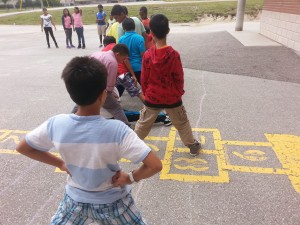Teaching is always new! With a new group of students, fresh reflections on practice and the opportunity to start from scratch, as it were, the start of the school year provides teachers and students alike the opportunity to create new beginnings every year. Knowing this, what might some important considerations be to make it a great start? Chapter One of The Heart and Art of Teaching and Learning: Practical Ideas and Resources for Beginning Teachers highlights four important themes for success: connecting with students, passion for teaching, attributes-based approach and importance of school culture. I would like to focus this reflection on the importance of connecting with students within the first 20 days of school as a means to establish an authentic relationship with students that fosters trust and inspires a willingness to take risks within a safe learning environment.
Renowned poet and author Maya Angelou once said, “I’ve learned that people will forget what you said, people will forget what you did, but people will never forget how you made them feel.” This profound sentiment holds true for teachers and their relationship with students in that when students feel respected, safe and cared for, the experience of learning is enriched. The following are five practical ways for teachers to build authentic connections with their students at the start of the school year:
1. Be authentic. When teachers model what it means to be an authentic learner – mistakes and all, students are then encouraged to take risks without fear of reprisal. Let your model of authentic learning influence students to do the same. This form of transparency sets the tone for fostering meaningful connections between teachers and students.
2. Ask students about their needs and listen. Validate student voice by positioning them as the experts on themselves. Invite students to share their learning needs and the things that you could do as their teachers that would support their success and commit to doing them. Conducting multiple intelligence and attitudes and dispositions surveys are great ways to begin the dialogue for students to articulate how you can support their learning and their level of self-efficacy.
3. Explore student interests. As teachers we all need to cover the curriculum but viewing the curriculum as a launching pad as opposed to a landing pad can invite student’s interests to take centre stage in the teaching and learning process. Ask students about their interests and find creative ways to invite further inquiry into them while exploring the curriculum at the same time.
4. Learn the students. In addition to the information that can be found in student records (i.e. OSRs), commit to learning more about your students in meaningful ways. Pronouncing student names correctly is important way to let students know that they are valued. Challenge yourself to learn at least five non-school related facts about each of your students. This can help to build a positive relationship and validate their experiences outside of the domain of the classroom. Finally, being aware of students personalities (i.e. introverts, extroverts, etc.) will inform how to relate to them as well as setting the conditions of the classroom experience.
5. Invite to student voice by fostering a reciprocal relationship with your students. Nurturing a collaborative learning environment for students does not merely mean giving students the opportunity to collaborate with each other, but it also means positioning students as collaborators with you. Partner with your students to design the learning space and learning opportunities. This fosters student ownership in the teaching and learning experience and empowers students to be meaningful contributors to the class. When you invite their voice in classroom decisions, ensure that it is validated by action on your part. Leveraging positional power in the classroom creates space for a more meaningful connection between students and teacher.
As teachers we are in the business of supporting students success. Fostering meaningful connections with students goes along way in promoting both student achievement and well-being. When students know that their teachers authentically care about them, their willingness to learn will support their ability to do well. Starting the school year with students in mind will set you on a solid foundation for building upward. Make it a great start.







